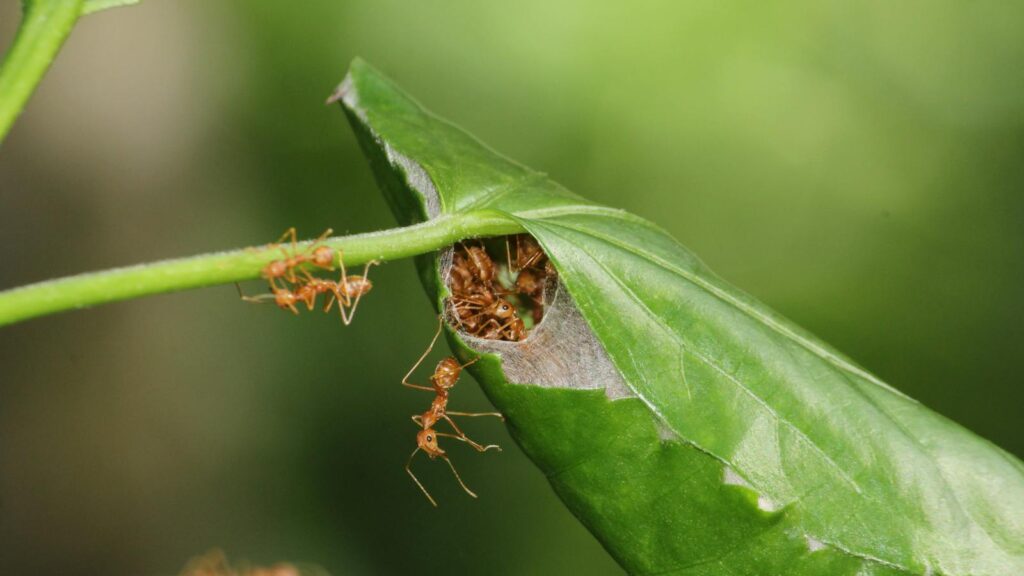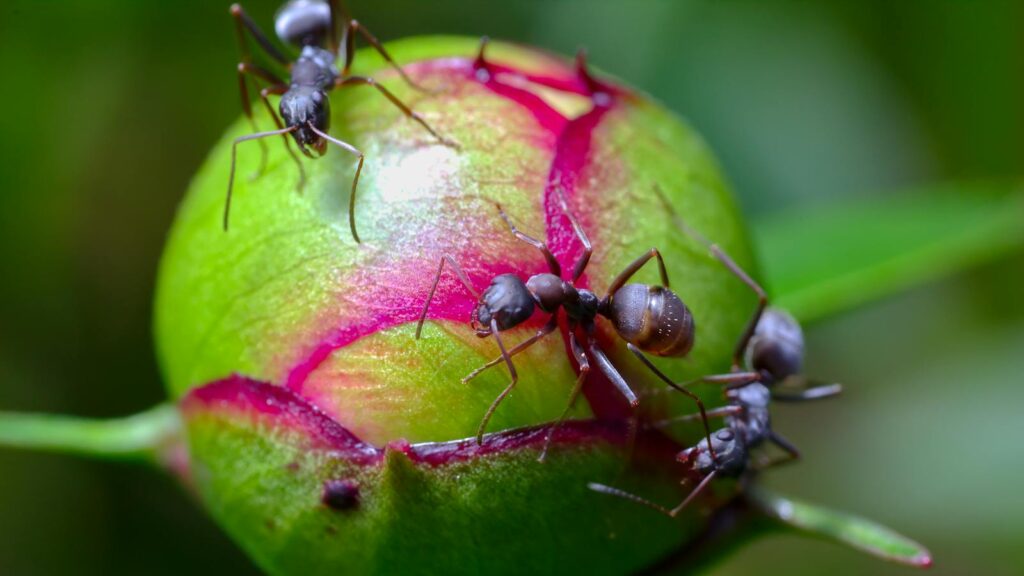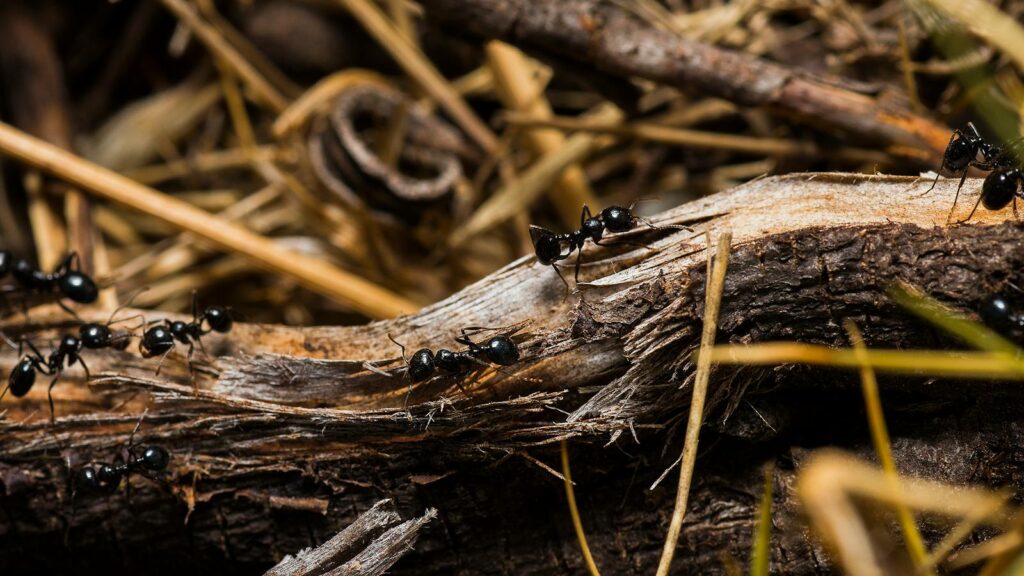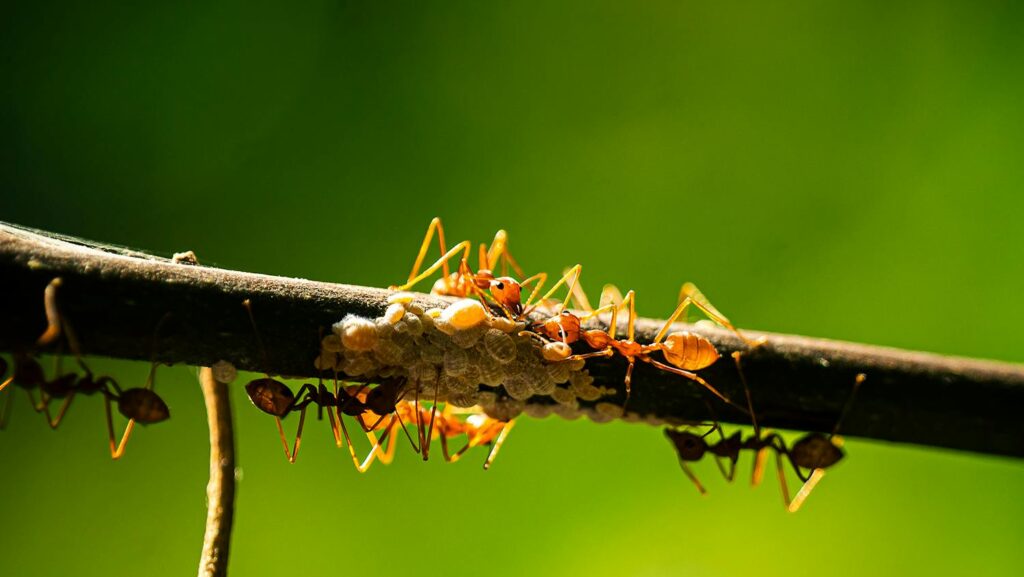
In the intricate tapestry of ecosystem services, some of the smallest participants often play outsized roles. Ants, those ubiquitous six-legged creatures that form bustling colonies beneath our feet, are among nature’s most efficient and overlooked seed dispersers. These industrious insects have been silently shaping plant communities for millions of years, moving seeds across landscapes with remarkable precision and purpose. While birds and mammals might get more recognition for their seed-spreading abilities, ants engage in a specialized form of seed dispersal called myrmecochory that proves vital for countless plant species worldwide. Their tireless work as nature’s tiny farmers helps maintain biodiversity, aids in plant colonization of new areas, and even assists in ecosystem recovery after disturbances like fires or deforestation.
The Ancient Partnership Between Ants and Plants

The relationship between ants and plants dates back approximately 50 million years, evolving into one of nature’s most successful mutualistic partnerships. Fossil evidence suggests that myrmecochory (ant-based seed dispersal) likely developed during the Cretaceous period when flowering plants were diversifying rapidly. This long-standing association has allowed both parties to develop specialized adaptations that enhance their mutual success. Plants have evolved seeds with nutrient-rich appendages specifically designed to attract ants, while ants have developed behaviors and preferences that make them efficient seed transporters. This evolutionary dance represents a remarkable example of coevolution, where two distinct organisms have shaped each other’s development over millennia. The persistence of this relationship across time and geography speaks to its effectiveness as a survival strategy for both participants.
Understanding Myrmecochory: The Science of Ant-Plant Partnerships

Myrmecochory, derived from the Greek words for “ant” and “dispersal,” refers to the specific ecological interaction where ants transport seeds to new locations. This process begins when plants produce seeds with specialized structures called elaiosomes – lipid-rich appendages that serve as nutritional rewards for the ants. When ants encounter these seeds, they’re attracted to the elaiosome rather than the seed itself, carrying the entire package back to their nests. Once safely inside the colony, the ants consume or feed the elaiosome to their larvae, then typically discard the intact seed in underground waste chambers or outside the nest entrance. This remarkable arrangement benefits both parties: the ants receive valuable nutrition, while the plants gain targeted seed dispersal to microsites that are often ideal for germination. Myrmecochory has evolved independently in numerous plant families across different continents, highlighting its effectiveness as a dispersal strategy.
The Elaiosome: Nature’s Perfect Ant Bait

Elaiosomes represent one of nature’s most elegant adaptations, specifically designed to entice ants into becoming unwitting plant allies. These specialized structures are nutritional powerhouses, typically rich in lipids, proteins, and carbohydrates that mimic the composition of insect fat bodies – a preferred food source for many ant species. The chemical makeup of elaiosomes often includes oleic acid, a compound that elicits strong carrying behaviors in ants, essentially tricking them into treating the seeds like insect corpses they would normally collect. The size, shape, and nutritional composition of elaiosomes vary considerably across plant species, with each adaptation tailored to attract specific local ant communities. Perhaps most remarkably, once ants have consumed the elaiosome, they generally leave the seed itself untouched, allowing it to germinate in its new location without damage to the embryonic plant within.
Benefits to Plants: Why Recruit Tiny Farmers?

Plants have evolved to utilize ant dispersal for several compelling ecological reasons that enhance their reproductive success. First, ant transportation helps seeds escape the shadow of their parent plants, reducing competition for light, water, and nutrients while decreasing the likelihood of pathogen or predator attacks that often concentrate near parent plants. Second, ants frequently deposit seeds in nutrient-rich microsites – their nest chambers or refuse piles contain higher concentrations of nitrogen, phosphorus, and other essential nutrients that can jump-start seedling growth. Third, burial of seeds in ant nests offers protection from seed predators and reduces exposure to fire, extreme temperatures, and other environmental hazards. Fourth, in some ecosystems studies have shown that myrmecochorous plants enjoy significantly higher germination rates and seedling survival compared to plants using other dispersal methods, demonstrating the effectiveness of this specialized relationship in promoting plant reproductive success across diverse habitats worldwide.
The Ant’s Perspective: Nutritional Rewards

From the ant’s perspective, collecting elaiosome-bearing seeds represents a significant nutritional opportunity that supports colony health and development. Elaiosomes contain concentrated nutrients that are particularly valuable for developing larvae, offering proteins for growth and lipids for energy storage. Chemical analyses have revealed that these structures often contain essential fatty acids, amino acids, and carbohydrates in proportions that complement the ants’ dietary needs. For some ant species, elaiosomes can constitute a substantial portion of their colony’s nutritional intake during peak seed production seasons. Interestingly, competition for these nutrient-rich prizes can be fierce among ant colonies, with larger or more aggressive species sometimes dominating access to this resource. This nutritional benefit explains why ants have maintained this relationship over evolutionary time – the energy invested in seed transport is well compensated by the concentrated food reward they receive.
Ant Species Specializing in Seed Dispersal

While many ant species opportunistically collect seeds with elaiosomes, certain genera have evolved as particularly efficient seed dispersers with adaptations specifically enhancing this ecological function. Formica species in North America and Europe are renowned seed dispersers, capable of moving thousands of seeds per colony annually across relatively long distances. In Australia, meat ants (Iridomyrmex purpureus) are key dispersers for numerous native plant species, creating nutrient-enriched soil mounds where collected seeds thrive. The harvester ants (Pogonomyrmex and Messor genera) not only disperse seeds but create distinctive soil disturbances that create unique microhabitats favorable for certain plant species. Some ant species even demonstrate size-based preferences, with larger ants capable of transporting bigger seeds, creating interesting plant-ant size correlations across landscapes. The global distribution of specialized seed-dispersing ants highlights how this ecological strategy has been independently selected for across diverse environmental conditions.
Distance and Direction: The Mechanics of Ant Dispersal

The physical aspects of ant-mediated seed dispersal follow fascinating patterns that influence plant distribution across landscapes. While ants don’t match birds or mammals in long-distance dispersal, they excel at meticulous short-range seed placement, typically moving seeds between 0.5 and 70 meters from parent plants—distances that prove sufficient to escape parent-plant competition zones. Research using marked seeds has revealed that ants often follow scent trails when transporting seeds, creating non-random dispersal patterns that may concentrate related plants in favorable microsites across the landscape. The speed of seed removal can be remarkable, with studies documenting that attractive seeds can disappear from experimental plots within hours of placement, particularly during periods of high ant activity. Fascinatingly, ant species diversity in an ecosystem creates a multi-layered dispersal network, with different ant species moving seeds varying distances and to different types of microsites, increasing the probability that some seeds will reach optimal germination locations.
Ecological Impact: Shaping Plant Communities

The cumulative effect of millions of tiny seed-moving events by ants profoundly shapes plant community structure and composition across ecosystems worldwide. In some forest ecosystems, particularly in parts of Europe, North America, and Australia, myrmecochorous plants can constitute up to 30-40% of the herbaceous understory species, demonstrating the evolutionary success of this dispersal strategy. Ant dispersal creates distinctive spatial patterns in plant communities, often resulting in patchy distributions centered around current or former ant nests where seeds have accumulated over generations. Long-term studies in deciduous forests have documented how ant-dispersed spring wildflowers like trilliums, violets, and bloodroot form distinctive communities that differ measurably from areas dominated by wind or bird-dispersed species. Perhaps most importantly, the selective transportation of certain seeds by ants influences competitive dynamics between plant species, potentially increasing local biodiversity by allowing ant-favored plants to establish in niches where they might otherwise be outcompeted.
Post-Fire Recovery: Ants as Ecosystem Restorers

In fire-prone ecosystems worldwide, ants play a particularly crucial role in facilitating vegetation recovery following burns through their seed-banking activities. Prior to fires, ants continuously transport seeds underground into their nests, inadvertently creating protected seed repositories that survive even intense wildfire events when the soil surface is scorched. After fires pass through, these buried seed caches become critical sources for plant reestablishment, with studies in Australian sclerophyll forests showing that ant nests can contain up to 40 times more viable seeds than surrounding soils. The types of plants that partner with ants in fire-prone regions often exhibit fire-adapted traits themselves, creating a synchronized ecological strategy where plants produce seeds with elaiosomes precisely when ant activity is highest. Researchers have documented accelerated recovery rates in burned areas with healthy ant populations compared to similar habitats where ants were experimentally removed, demonstrating the tangible ecosystem service these insects provide during environmental disturbances.
Threatened Partnerships: Conservation Concerns

The delicate ant-plant mutualism faces mounting challenges in the Anthropocene era as human activities disrupt both partners in this ancient relationship. Habitat fragmentation can separate ant colonies from plant populations that depend on them for dispersal, potentially leading to reproductive failure for plants and nutritional deficits for ants. Climate change poses significant threats by potentially creating phenological mismatches, where plant seed production no longer coincides with peak ant activity due to shifting seasonal patterns. The global spread of invasive ant species, particularly aggressive competitors like fire ants and Argentine ants, can displace native seed-dispersing specialists, fundamentally altering seed movement patterns in affected ecosystems. Agricultural chemicals, particularly certain insecticides, can reduce ant populations or disrupt their foraging behaviors even at sub-lethal doses, indirectly affecting plant reproduction. Conservation biologists increasingly recognize that protecting these ecological interactions requires preserving not just the species involved but the functional relationships between them.
Studying Tiny Farmers: Research Techniques

Scientists employ an array of clever techniques to study the cryptic interactions between ants and the seeds they disperse across landscapes. Seed-tracking experiments often utilize fluorescent powders or UV-reflective markers applied to seeds, allowing researchers to follow their movement under specialized lighting conditions without disturbing natural ant behaviors. Some studies employ tiny radio frequency identification (RFID) tags attached to larger seeds, combined with detector arrays, to monitor seed movement in real-time across experimental plots. To understand seed fate after collection, researchers may excavate ant nests or use transparent artificial nests in laboratory settings that allow direct observation of how ants process collected seeds. DNA barcoding techniques are increasingly used to identify which plant species’ seeds are found in ant nest chambers, revealing previously unknown plant-ant associations. These methodological innovations continue to expand our understanding of the complex ecological role these tiny ecosystem engineers play in shaping plant communities worldwide.
Evolutionary Puzzles: Ongoing Questions

Despite decades of research, myrmecochory continues to present evolutionary biologists with fascinating unresolved questions about this specialized plant-animal relationship. Scientists debate whether ant dispersal evolved primarily as a mechanism to escape seed predators, to reach nutrient-rich microsites, or through some combination of selective pressures that varied across different plant lineages and geographic regions. The independent evolution of elaiosomes in over 11,000 plant species across numerous unrelated families represents a remarkable case of convergent evolution that continues to intrigue researchers studying adaptation mechanisms. Some myrmecochorous relationships show such specificity between particular plant and ant species that they approach the complexity of pollination syndromes, raising questions about coevolutionary processes and potential co-speciation events. Ongoing research using phylogenetic approaches and molecular dating techniques aims to establish more precise timelines for when these relationships first developed and how they diversified across evolutionary history, potentially revealing new insights about ecosystem development during major geological transitions.
Ants in Agriculture: Lessons from Nature’s System

The efficient seed-handling capabilities of ants have inspired agricultural researchers to explore applications of these natural systems in human food production and ecosystem restoration efforts. In degraded landscapes, conservation practitioners sometimes mimic elaiosomes by coating restoration seeds with nutrient-rich substances that attract native ants, effectively recruiting these insects as restoration assistants in replanting efforts. Some permaculture systems deliberately incorporate ant-friendly habitats near croplands, recognizing that healthy native ant populations provide multiple ecosystem services beyond seed dispersal, including pest control and soil aeration. Researchers studying ant foraging patterns and seed preferences have developed improved seed harvesting and planting technologies that mimic the efficiency of ant seed selection systems. The biochemical compounds in natural elaiosomes are being analyzed for potential applications in seed coating technologies that could enhance germination success or provide early seedling nutrition in agricultural settings. These biomimicry approaches demonstrate how studying natural ecological relationships can yield practical applications for sustainable food systems and habitat restoration techniques.
Conclusion: Appreciating Nature’s Tiny Farmers

The remarkable partnership between ants and plants represents one of nature’s most successful and enduring ecological relationships, operating largely unseen beneath our feet across ecosystems worldwide. These tiny farmers, through millions of individual seed-moving actions, collectively shape plant communities, aid ecosystem recovery after disturbances, and maintain biodiversity in ways that far exceed what might be expected from their small size. As we face growing environmental challenges, preserving these ecological interactions becomes increasingly important, requiring conservation approaches that protect not just individual species but the functional relationships between them. The next time you notice ants busily working in your garden or a natural area, consider that you might be witnessing a farming practice refined over tens of millions of years – one that continues to sustain plant communities through an elegant system of mutual benefit. In the grand drama of ecological interactions, ants truly deserve recognition as nature’s original and most dedicated farmers, tending the landscape one seed at a time.
